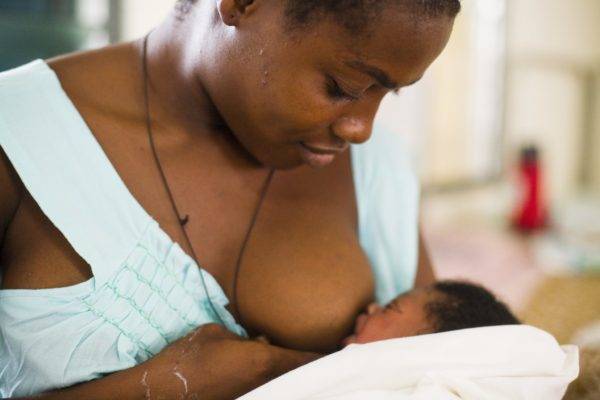Breastfeeding is one of the major ways of the transmission of HIV AIDS in the world. Mothers who are HIV positive transmits the virus to their baby through breast milk. Breastfeeding is not only the best option for providing nutrition and immune protection to the child but also an important bonding experience between mother and baby. In resource-poor areas, where access to clean water, sanitation, and affordable formula is limited, breastfeeding becomes even more critical for survival.
To address the HIV transmission risk, various strategies have been implemented. One such strategy is the use of antiretroviral drugs (ARVs) by the HIV-positive mother. ARVs can significantly reduce the viral load in breast milk, thereby decreasing the risk of transmission. WHO recommends that HIV-positive mothers take ARVs during pregnancy and breastfeeding to minimize the chances of infecting their infants. Additionally, ART (antiretroviral therapy) for the baby and exclusive breastfeeding for the first six months, followed by continued breastfeeding along with complementary food until two years of age, is encouraged.
Exclusive breastfeeding means that the infant receives only breast milk and no other liquids or solid foods, not even water, except for medicines if necessary. This practice reduces the risk of illnesses and infections that can occur when other liquids or foods are introduced too early. It also helps establish and maintain a good milk supply.
In situations where exclusive breastfeeding is not possible or not recommended due to certain risk factors, such as severe maternal illness or inadequate ARV treatment, other feeding options are recommended. These options include using heat-treated expressed breast milk, pasteurized donor human milk, or commercially produced infant formula. It is important for healthcare providers to educate and support HIV-positive mothers in making an informed decision about the feeding method that best suits their individual circumstances.
In addition to ARVs and feeding options, other preventive measures can further reduce the risk of HIV transmission from mother to child. The WHO advocates for early infant diagnosis and prompt initiation of ART for infected infants. Early diagnosis allows for timely interventions to ensure the child's well-being and improve their chances of survival. Supportive measures, such as counseling and support groups for mothers living with HIV, can also play a significant role in empowering them to make informed choices and adhere to recommended treatment protocols.
While breastfeeding remains the optimal feeding method for infants, it is crucial to balance the potential benefits with the risk of HIV transmission. Providing mothers with accurate and up-to-date information about the options available to them is essential in enabling them to make informed decisions. Access to comprehensive healthcare services, including antenatal care, HIV testing, and support, is vital in ensuring the well-being of both the mother and the child.
Efforts to prevent mother-to-child transmission of HIV have made significant progress over the years, particularly in resource-rich countries. However, challenges persist in resource-poor settings where the burden of HIV is often higher, and access to healthcare services is limited. Addressing these challenges requires a multi-faceted approach involving governments, healthcare providers, community organizations, and international partners. Collaboration and investment in research, prevention, and treatment programs are crucial to reduce the impact of HIV on infants born to HIV-positive mothers.
In conclusion, breastfeeding remains a complex issue for HIV-positive mothers. While the risks of transmission exist, the benefits of breastfeeding, such as enhanced nutrition and immune protection, cannot be ignored. The use of antiretroviral drugs and proper feeding options can significantly reduce the risk of transmission. It is vital to provide comprehensive support, education, and access to healthcare services for HIV-positive mothers to make informed decisions about the best feeding method for their child's health and well-being. By addressing these challenges, we can strive towards an HIV-free generation where every child has the opportunity to lead a healthy and fulfilling life.


